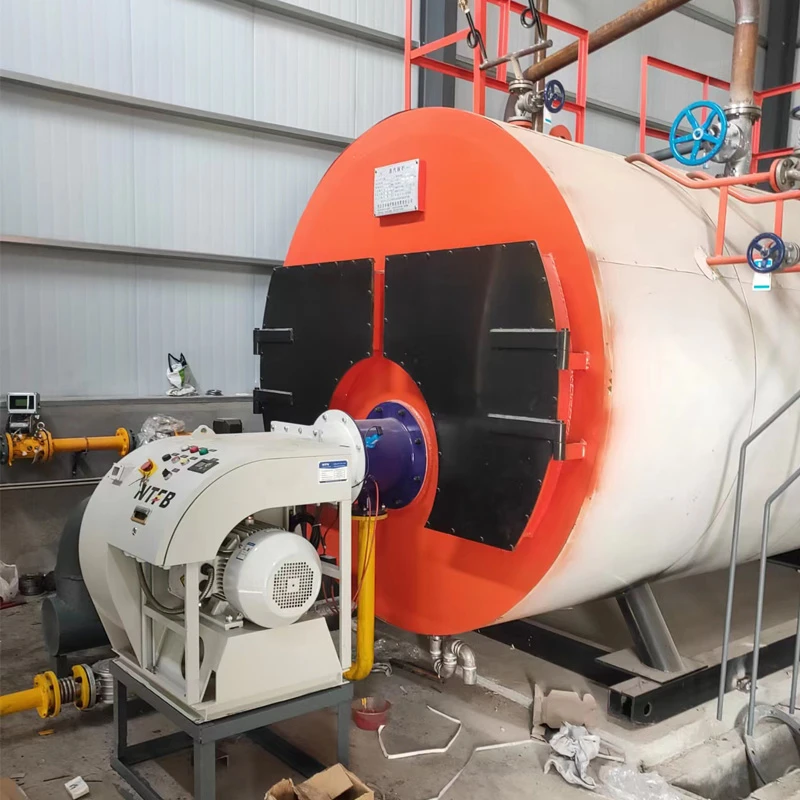
មីនា . 06, 2025 13:58 Back to list
biomass fired steam boiler
Designing an efficient and safe steam boiler is a critical task that requires a deep understanding of thermodynamics, material science, and engineering principles. The importance of mastering steam boiler design is paramount for industries relying on steam energy, from manufacturing to power generation. This comprehensive narrative delves into the essence of steam boiler design, examining the intricate balance between efficiency, safety, and sustainability.
Safety cannot be overstated in boiler operation. Design must incorporate multiple safety features such as pressure relief valves, water level indicators, and emergency shutoff systems to prevent catastrophic failures. Regular maintenance and inspection protocols are embedded in the operational guidelines to ensure the boiler system remains in optimal working condition. The adherence to international safety standards such as ASME (American Society of Mechanical Engineers) codes further solidifies the boiler's reliability and safety. Environmental considerations also play a critical role in modern steam boiler design. With growing concerns about climate change and air quality, minimizing emissions has become a priority. Incorporating technologies like flue gas desulfurization and low NOx burners can significantly reduce the environmental footprint of a boiler. Further, the integration of renewable energy sources or hybrid systems illustrates a forward-thinking approach to sustainable boiler design. In addition, the digitalization of boiler systems has emerged as a transformative trend. Intelligent control systems utilizing IoT (Internet of Things) and machine learning algorithms offer real-time monitoring capabilities, predictive maintenance, and enhanced operational efficiency. These smart systems help in identifying potential issues before they escalate, ensuring continuous and safe boiler operation. Collaboration with accredited industry experts and engaging with authoritative sources also bolster the design process. By leveraging expert advice and adhering to recognized standards, designers can innovate while maintaining compliance with legal and safety requirements. Engaging with experienced engineers and participating in industry forums provide invaluable insights that can shape practical and effective boiler designs. In conclusion, designing a steam boiler involves a nuanced blend of scientific principles, innovative engineering, and a commitment to safety and sustainability. It demands expertise and authoritative knowledge throughout the design process, ensuring that the resulting system not only meets operational demands but also contributes positively to environmental stewardship. Each decision, from material selection to technological integration, plays a crucial role in defining the efficacy and reliability of a steam boiler, setting a benchmark for excellence in industrial applications.


Safety cannot be overstated in boiler operation. Design must incorporate multiple safety features such as pressure relief valves, water level indicators, and emergency shutoff systems to prevent catastrophic failures. Regular maintenance and inspection protocols are embedded in the operational guidelines to ensure the boiler system remains in optimal working condition. The adherence to international safety standards such as ASME (American Society of Mechanical Engineers) codes further solidifies the boiler's reliability and safety. Environmental considerations also play a critical role in modern steam boiler design. With growing concerns about climate change and air quality, minimizing emissions has become a priority. Incorporating technologies like flue gas desulfurization and low NOx burners can significantly reduce the environmental footprint of a boiler. Further, the integration of renewable energy sources or hybrid systems illustrates a forward-thinking approach to sustainable boiler design. In addition, the digitalization of boiler systems has emerged as a transformative trend. Intelligent control systems utilizing IoT (Internet of Things) and machine learning algorithms offer real-time monitoring capabilities, predictive maintenance, and enhanced operational efficiency. These smart systems help in identifying potential issues before they escalate, ensuring continuous and safe boiler operation. Collaboration with accredited industry experts and engaging with authoritative sources also bolster the design process. By leveraging expert advice and adhering to recognized standards, designers can innovate while maintaining compliance with legal and safety requirements. Engaging with experienced engineers and participating in industry forums provide invaluable insights that can shape practical and effective boiler designs. In conclusion, designing a steam boiler involves a nuanced blend of scientific principles, innovative engineering, and a commitment to safety and sustainability. It demands expertise and authoritative knowledge throughout the design process, ensuring that the resulting system not only meets operational demands but also contributes positively to environmental stewardship. Each decision, from material selection to technological integration, plays a crucial role in defining the efficacy and reliability of a steam boiler, setting a benchmark for excellence in industrial applications.
Share
Latest News
-
Best Steam Boiler Design PDF Free Design Calculation & Diagram Downloads
NewsJun.10,2025
-
Hot Boiler Water Heater Efficient Heating Solutions for Home & Commercial Use
NewsJun.10,2025
-
Steam Boiler Safety Devices High-Quality Protection Valves
NewsJun.10,2025
-
Ultimate Steam Boiler Checklist for Safety & Efficiency
NewsJun.10,2025
-
Optimal Hot Water Boiler Temperature Setting Guide
NewsJun.10,2025
-
Effective Hot Water Boiler Chemical Treatment Protect & Maintain
NewsJun.09,2025
Related PRODUCTS
Copyright © 2025 HEBEI HONGZE BOILER MANUFACTURING CO., LTD. All Rights Reserved. Sitemap | Privacy Policy






















